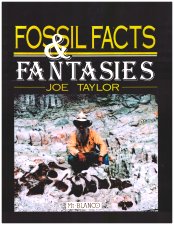|
An excerpt from the book: Fossil Facts & Fantasies by Joe Taylor Translated by:_____ (Page 19)
Copyright 1999 - ISBN: 0-9700779-0-4
|
 |
|
An excerpt from the book: Fossil Facts & Fantasies by Joe Taylor Translated by:_____ (Page 19)
Copyright 1999 - ISBN: 0-9700779-0-4
|
 |

A powerful muscle holds the clam shell closed, until it dies. |
How do we explain the vast beds of closed clams, which were evidently buried alive? Clams can burrow down into the soft mud where they live and come up to feed or whatever. If a mud slide occurred, as I contend, and several feet of mud and muck were to be deposited on top of the clams when they began to try and wiggle out, they could only go so far up and would die from lack of oxygen or food. They also would not be able to open up when they died. |
| Several closed clam beds I've excavated are slightly above the bones,
however the pelvis of one Postosuchus, from an animal, already dead when
buried, had clams under it and on top of it.
Also during a prolonged rain (the biblical duration of forty days), it is pretty certain that all the giant salamanders, horned aetosaurs and phytosaurs, would have been drowned, as they all have nostrils on the top of their heads. The postosuchids and smaller dinosaurs and mammals could conceivably have turned their heads down, but eventually, like cattle in long hard rains, they would drown standing up. |

Fossilized Salamander skull (note nostrils on top) |
| For more creation science teaching on pre-Flood fossilized clams and
oysters,
see Dr. Kent Hovind's Seminar #6 "The Hovind Theory" Mt. Everest, at 29,000 feet (8,800 m), is the world's highest mountain. Guess what the exhausted mountain climbers find when they finally reach the top? [Images RIGHT & BELOW are from the video] |

The top of Mt. Everest is covered in fossilized clams; all in the closed position, i.e. buried alive! |

A man stretches across a giant fossilized oyster, 2 miles high, on the mountains in Peru. |

Hundreds of giant fossilized clams and oysters have been found high in the Andes Mtns, in Peru |
|
|
|